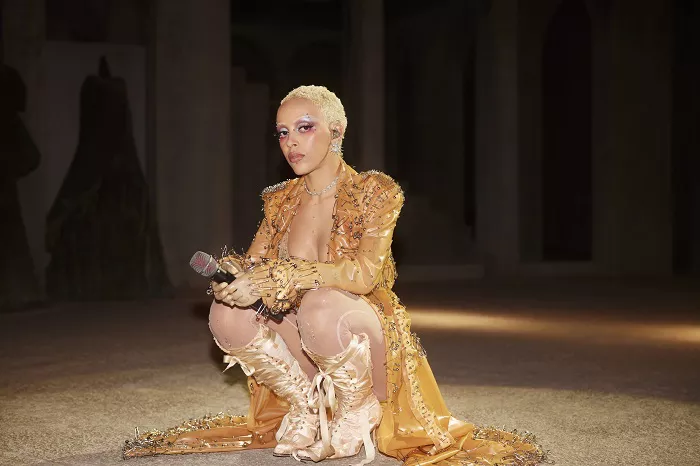Hip hop music, a genre born in the Bronx in the 1970s, has evolved into a global cultural phenomenon. Its influence extends far beyond just music, permeating fashion, dance, and language. To truly understand what defines hip hop music, we must delve into its history, its elements, its impact, and its ongoing evolution.
The Birth of Hip Hop Music: A Cultural Revolution
Hip Hop Music emerged in the South Bronx during the 1970s, a time of economic hardship and social unrest. It was more than just music; it was a cultural revolution. DJ Kool Herc, often called the “father of hip hop,” played a pivotal role by using two turntables to extend instrumental breaks in songs. This practice, known as “breakbeating,” laid the foundation for hip hop’s rhythmic style.
During this era, MCs (Master of Ceremonies) began to rhyme over these breaks, adding a lyrical dimension to the music. Hip hop music became a vehicle for expressing the struggles and aspirations of marginalized communities.
The Four Pillars of Hip Hop Music
To truly define hip hop music, we must explore its core elements, often referred to as the “four pillars” of hip hop:
1. Rap: The Verbal Essence of Hip Hop Music
Hip hop music is often synonymous with rap, a form of rhythmic and rhyming speech delivered with precision and creativity. Rap is the verbal essence of hip hop, serving as a platform for artists to share their stories, perspectives, and social commentary. It’s the driving force that propels hip hop’s narrative.
2. Breakdancing: The Visual Expression
While hip hop music dominates the auditory realm, breakdancing, or b-boying/b-girling, is the visual expression of the culture. Breakdancers, or “b-boys” and “b-girls,” use intricate footwork, acrobatics, and creativity to dance to the beats of hip hop music, adding a dynamic visual dimension to the culture.
3. Graffiti Art: The Urban Canvas
Graffiti art is another integral component of hip hop culture. It serves as a visual manifestation of the community’s spirit and creativity. Artists use walls and subway cars as their canvas, often incorporating vibrant colors and intricate designs, all while being inspired by the rhythms and messages of hip hop music.
4. DJing: The Sonic Architect
DJs are the architects of hip hop music, responsible for mixing, scratching, and manipulating records to create unique soundscapes. Their role in hip hop is fundamental, as they provide the beats and instrumentals that MCs rap over and breakdancers dance to. DJs like Grandmaster Flash and Grand Wizard Theodore played pivotal roles in shaping the sound of hip hop.
The Evolution of Hip Hop Music: From Boom Bap to Trap
As hip hop music continued to grow, it diversified into various sub-genres and styles. One significant evolution was the transition from the “boom bap” era, characterized by heavy drum patterns and sampled melodies, to the trap era, characterized by slower tempos, prominent basslines, and electronic influences.
The emergence of trap music, with artists like T.I., Young Jeezy, and Gucci Mane, brought a new sonic palette to hip hop music, reflecting the realities of urban life and the trap houses from which it draws its name. This evolution highlights hip hop’s adaptability and its ability to stay relevant in an ever-changing musical landscape.
Lyricism in Hip Hop: More Than Just Words
Lyricism is at the heart of hip hop music. While some may dismiss rap as mere words, it’s important to recognize the depth and complexity it can convey. Hip hop lyrics often address issues such as social justice, racial inequality, economic disparity, and personal experiences. Artists like Tupac Shakur and Kendrick Lamar have used their lyrical prowess to shed light on these issues, proving that hip hop music can be a powerful tool for social change.
Hip Hop’s Influence on Fashion
Beyond the music itself, hip hop has had a profound influence on fashion. The iconic styles of artists like Run-D.M.C., LL Cool J, and Salt-N-Pepa in the 1980s and 1990s set trends that still resonate today. From baggy jeans and tracksuits to gold chains and sneakers, hip hop fashion is a reflection of the culture’s unapologetic and innovative spirit.
The Globalization of Hip Hop Music
What defines hip hop music today is its global reach. It has transcended its South Bronx origins to become a universal language, connecting people from diverse backgrounds. Artists from around the world, such as Eminem, Jay-Z, and BTS, have contributed to the genre’s globalization, proving that hip hop’s appeal knows no boundaries.
The Ongoing Evolution of Hip Hop
Hip hop music continues to evolve. It has embraced elements of rock, pop, electronic music, and even classical music, pushing the boundaries of what defines the genre. This constant evolution is a testament to hip hop’s ability to adapt and innovate, ensuring its relevance for generations to come.
Conclusion
In conclusion, hip hop music is a multi-faceted cultural phenomenon that defies easy definition. It is rap, breakdancing, graffiti art, and DJing, all wrapped in a package that reflects the experiences and aspirations of marginalized communities. It has evolved from its humble beginnings in the Bronx to become a global force, influencing not only music but also fashion, dance, and language.
As we continue to witness the evolution of hip hop, one thing remains clear: it is more than just a genre; it’s a movement. It’s a powerful tool for self-expression, social commentary, and cultural celebration. What defines hip hop music is its ability to resonate with people, to tell their stories, and to inspire change. It’s a living, breathing art form that continues to shape the world.
So, the next time you listen to hip hop music, remember that it’s not just a genre; it’s a culture, a revolution, and an ever-evolving force that defines the spirit of our times.

